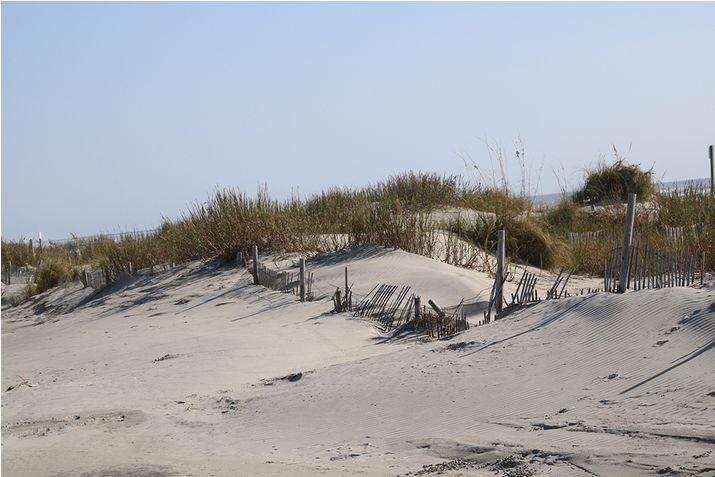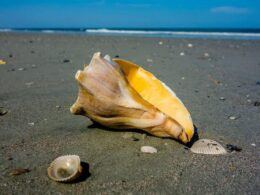Folly Beach, South Carolina, with its stunning coastline and vibrant community, is not only a popular tourist destination but also a crucial ecological and economic asset. However, like many coastal regions around the world, Folly Beach faces the ongoing threat of erosion. In response, beach renourishment has emerged as a vital strategy to combat this natural process, ensuring the preservation of both the beach’s recreational value and its ecological integrity. In this comprehensive exploration, we delve into the reasons behind beach renourishment, the techniques involved, and the specific case of Folly Beach, highlighting the importance of this practice in sustaining coastal resilience.
Understanding Beach Erosion
Before delving into beach renourishment, it’s essential to grasp the phenomenon it aims to address: beach erosion. Beaches are dynamic environments shaped by the interaction of various natural forces, including waves, currents, and wind. Over time, these forces gradually remove sand from the shoreline, leading to the recession of beaches. Erosion can be exacerbated by factors such as sea level rise, storm surges, and human activities like coastal development and dredging.
The Impacts of Erosion
Beach erosion poses significant challenges with far-reaching consequences. Firstly, it threatens coastal infrastructure, including homes, businesses, and vital transportation routes. As beaches diminish, the risk of property damage and loss increases, jeopardizing both residents and local economies. Additionally, erosion can degrade important habitats such as dunes, wetlands, and estuaries, disrupting delicate ecosystems and reducing biodiversity. Furthermore, the loss of sandy beaches diminishes recreational opportunities, impacting tourism and the associated economic benefits.
Enter Beach Renourishment
Beach renourishment, also known as beach nourishment or beach replenishment, offers a proactive solution to combat erosion and preserve coastal resilience. Unlike hard engineering structures like seawalls or groins, which can disrupt natural processes and exacerbate erosion in adjacent areas, renourishment seeks to mimic nature by replenishing lost sand and restoring the beach’s natural profile.
The Process of Renourishment
The process of beach renourishment typically involves several key steps:
- Sand Sourcing: High-quality sand is sourced from offshore or inland locations, chosen for its compatibility with the existing beach sediment and its ability to withstand coastal processes.
- Sand Placement: The collected sand is then transported to the target beach via dredging or trucking and strategically placed along the shoreline to rebuild and widen the beach.
- Shaping and Grading: Heavy machinery is used to shape and grade the newly deposited sand, ensuring a natural slope and profile that enhances beach stability and aesthetics.
- Monitoring and Maintenance: Post-renourishment, ongoing monitoring is essential to assess the project’s effectiveness and address any issues promptly. Maintenance nourishments may be scheduled periodically to counteract natural erosion processes and maintain the beach’s integrity.
Renourishment at Folly Beach
Folly Beach, situated near Charleston, South Carolina, is a prime example of a coastal community implementing beach renourishment to safeguard its shoreline. The beach serves as a beloved recreational hub and critical habitat for diverse flora and fauna. However, erosion threatened to diminish its allure and compromise its ecological value.
To address this challenge, the City of Folly Beach, in collaboration with state and federal agencies, embarked on a series of renourishment projects. These initiatives involved the careful selection and placement of compatible sand to bolster the beach, enhance storm protection, and preserve crucial habitats such as nesting areas for endangered species like loggerhead sea turtles.
Check out the Folly Beach Renourishment Tracker here.
The Benefits of Renourishment
Beach renourishment offers a multitude of benefits that extend beyond mere shoreline protection:
- Enhanced Resilience: By restoring and widening beaches, renourishment reduces the impacts of coastal hazards such as storm surges and flooding, safeguarding both human communities and natural habitats.
- Economic Stability: Maintaining healthy beaches is vital for sustaining tourism, supporting local businesses, and preserving property values, thereby fostering economic stability and prosperity.
- Ecological Preservation: Renourishment projects can benefit coastal ecosystems by preserving critical habitats, promoting biodiversity, and providing nesting sites for endangered species.
- Recreational Opportunities: A wider, more robust beach enhances recreational opportunities such as swimming, sunbathing, and beachcombing, enriching the quality of life for residents and visitors alike.
In conclusion, beach renourishment stands as a crucial tool in the ongoing battle against coastal erosion, offering a sustainable and effective means of preserving our shorelines for future generations. The case of Folly Beach exemplifies the importance of proactive coastal management strategies that prioritize both human needs and ecological integrity. As we confront the challenges of a changing climate and rising sea levels, investments in renourishment and other nature-based solutions are essential to ensure the resilience and vitality of our coastal communities. Through collaboration, innovation, and a commitment to stewardship, we can continue to enjoy the beauty and benefits of our beaches while safeguarding them for generations to come.













